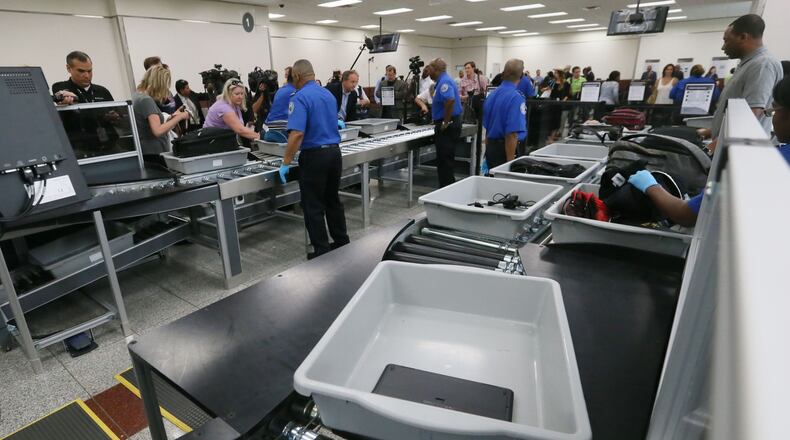Hartsfield-Jackson International Airport's two new security lanes featuring technology to speed screening processed about 1,000 passengers more per day over Memorial Day weekend than normal, according to the Transportation Security Administration.
The TSA said the Atlanta airport's South security checkpoint, where two of the four lanes are the new "innovation lanes," processed an average of 6,800 passengers per day over Memorial Day weekend. That's about 19 percent more than the typical 5,700 passengers processed a day at that checkpoint.
To be sure, the increased throughput may partly be due to increased passenger counts over the holiday.
"The volume is a little higher over Memorial Day weekend," said TSA spokesman Mark Howell. But he said the regular lanes would not have been able to push 1,000 more passengers through.
"You can see the efficiency already," Howell said. "The stats are promising." The agency will review more comprehensive statistics in the future to analyze how the new lanes perform.
Credit: Kelly Yamanouchi
Credit: Kelly Yamanouchi
The new lanes feature automated conveyor belts that can move bins around to the front of the line, instead of having TSA workers manually carry the bins back. Each lane also has five stations for travelers to put their carry-on items into bins, to avoid getting stuck behind a slower passenger. The bins are equipped with RFID chips for tracking.
And there have already been some tweaks in the way the lanes are used to improve processing of passengers, Howell said. New signs inform travelers where to place bins, for example.
"We're kind of evolving it as we're learning things... seeing the psychology of passengers," Howell said.
MORE:
About the Author
Keep Reading
The Latest
Featured





